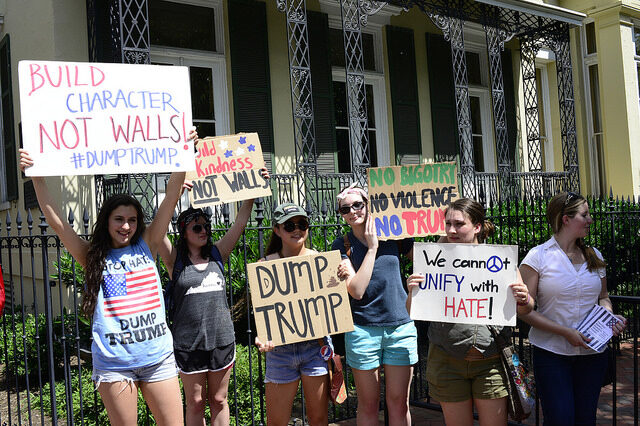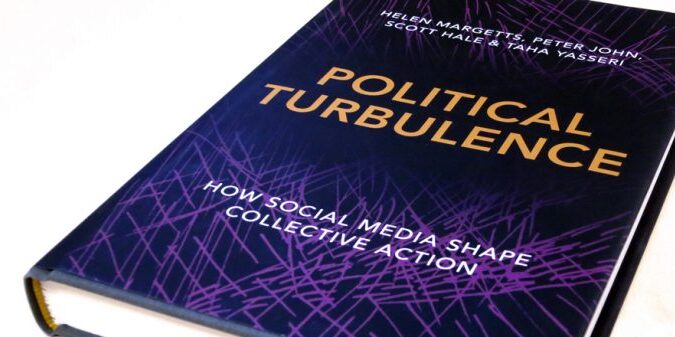
Young activists gather at Lafayette Park in protest at the presidential campaign of presumptive Republican nominee Donald J. Trump. By Stephen Melkisethian (Flickr).
Commentators have been quick to ‘blame social media’ for ‘ruining’ the 2016 election in putting Mr Donald Trump in the White House. Just as was the case in the campaign for Brexit, people argue that social media has driven us to a ‘post-truth’ world of polarisation and echo chambers. Is this really the case? At first glance, the ingredients of the Trump victory — as for Brexit — seem remarkably traditional. The Trump campaign spent more on physical souvenirs than on field data, more on Make America Great Again hats (made in China) than on polling. The Daily Mail characterisation of judges as Enemies of the People after their ruling that the triggering of Article 50 must be discussed in parliament seemed reminiscent of the 1930s. Likewise, US crowds chanting ‘Lock her up’, like lynch mobs, seemed like ghastly reminders of a pre-democratic era. Clearly social media were a big part of the 2016 election, used heavily by the candidates themselves, and generating 8.8 billion posts, likes and commentson Facebook alone. Social media also make visible what in an earlier era could remain a country’s dark secret — hatred of women (through death and rape threats and trolling of female politicians in both the UK and US), and rampant racism. This visibility, society’s new self-awareness, brings change to political behaviour. Social media provide social information about what other people are doing: viewing, following, liking, sharing, tweeting, joining, supporting and so on. This social information is the driver behind the political turbulence that characterises politics today. Those rustbelt Democrats feeling abandoned by the system saw on social media that they were not alone — that other people felt the same way, and that Trump was viable as a candidate. For a woman drawn towards the Trump agenda but feeling tentative, the hashtag #WomenForTrump could reassure her that there were like-minded people she could identify with. Decades of social science research shows information about the behaviour of others influences how groups behave and now it is driving the unpredictability of politics,…

